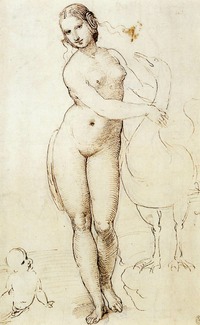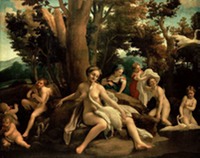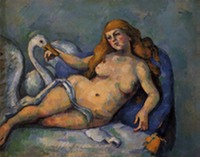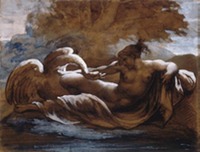(after) leonardo da vinci leda and the swan 1515-1520
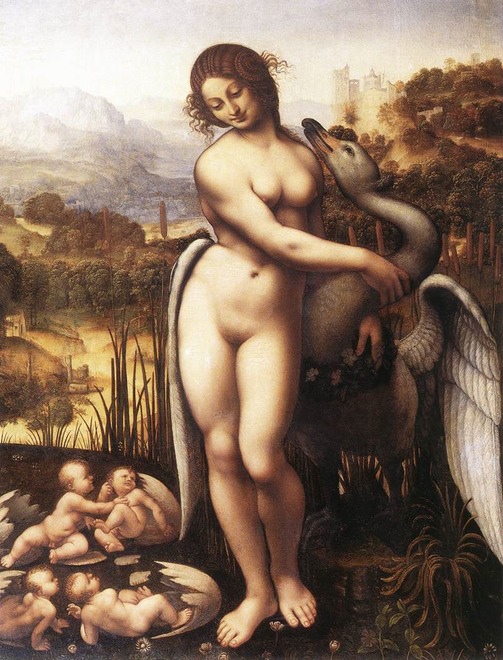
The threatened swan painted by Jan Asseleijn is an aggressive male swan. Centuries earlier Leonardo da Vinci painted a very tender and compassionate male swan. The painting tells the ancient Greek myth of Leda and the swan. The Greek god Zeus (Jupiter) who was in love with the beautiful Leda ( wife of the king of Sparta) took the form of a swan to conquer her. It is not certain that the romantic interpretation of Leonardo is the right one. There is some debate among experts of Greek mythology wether Leda was seduced or raped by the swan (Zeus). According to the myth Leda shared the bed with the swan and her husband at the same night. She gave birth to four children born in eggs: the twins Castor and Pollux and two daughters: Helena (of Troy) and Clytaemnestra. Most scholars agree that the twins and Helena were fathered by Zeus. The myth was a popular subject among Italian Renaissance painters. Probably because it gave them the opportunity to paint a female nude caught in the act of love. Despite the alibi of the classic Greek myth it was a dangerous subject because the almighty Roman Catholic Church did not appreciate paintings with an erotic overtone. Many early paintings of Leda and the swan soon disappeared from the public eye. Destroyed or deeply hidden in private collections of the elite. Rumor suggests that the deep cellars of the Vatican contain a secret collection of evil books and paintings collected during past ages. If this is true it is quite possible that you will find there a copy of Leda and the swan. Fortunately some of the forbidden paintings were copied. So we still have some knowledge about the original paintings on this subject made by Michel Angelo and Leonardo da Vinci. In the following ages Leda was a source of inspiration for many artists. Most of the artists chose for a romantic or an erotic interpretation. The French romantic painter Theodore Gericault is an exception. He was a man of drama and had a preoccupation with death, violence and monomania. He often painted victims of ill fate (wounded soldiers, shipwrecked persons on a raft). Gericault painted a determined Leda in a defensive position trying to fend off the intrusive swan with her hand and knee. But at the same time Gericault expresses that Leda is fighting an unequal battle and has to resign herself to the inevitable.
